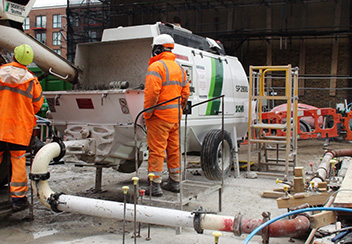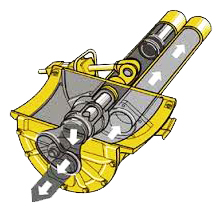Background to Concrete Pumps
A concrete pump is a tool for conveying liquid concrete.
Over a period of more than half a century, concrete pumps have slowly taken over from other methods of transferring liquid concrete. A number of different designs of concrete pump were developed in the first half of the 20th century but it was Friedrich Wilhelm Schwing’s company Schwing GmbH which invented the twin cylinder hydraulic concrete pump in 1957. The principle of this design was adopted by almost all other manufacturers and is still the worldwide standard design.
The pump works by one piston drawing liquid concrete into a cylinder from a hopper while the other one simultaneously pushes its concrete out into the discharge pipes. A valve which determines which cylinder is open to the concrete hopper and which one is open to the discharge pipes switches over each time the pistons reach the end point (see rock valve below and animation left – click to enlarge) and the process continues with the first cylinder now discharging and the second drawing fresh concrete from the hopper.
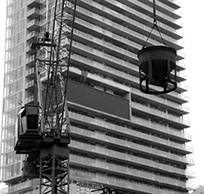 The Concrete Pump was particularly important in revolutionising the construction of large high rise buildings. Previously cranes had been employed to lift large buckets (or skips) full of concrete up to where it was needed. A crane could lift one bucket at a time, normally holding around 2 cubic yards of concrete.
The Concrete Pump was particularly important in revolutionising the construction of large high rise buildings. Previously cranes had been employed to lift large buckets (or skips) full of concrete up to where it was needed. A crane could lift one bucket at a time, normally holding around 2 cubic yards of concrete.
There are many advantages in pumping concrete over this bucket and crane system. As well as being able to pump concrete much faster than buckets could lift it, it also means a constant supply of concrete to the top and the placing hoses can be positioned wherever they need to be so the liquid concrete can pour straight out of the hose where it’s needed rather than having to distribute a two cubic yard mound of concrete over the desired area.
Advantages of concrete pumping over lifting it up in skips via a crane:
- Much larger volume of concrete placed per hour. A crane would be doing well lift 12m³ per hour. A Schwing Static Pump can pump over 50m³ per hour to the top of today’s tallest high rise buildings.
- Constant flow. Today’s Schwing Concrete Pumps can pump concrete as quickly as a truck mixer can discharge into them. Even as fast as two truck mixers can discharge in many situations.
- Fewer wasted man hours. The people placing the concrete need to wait for the next batch while the skip is in motion or being refilled at the bottom. The people at the bottom are just waiting for the skip to come back down while it is in motion or discharging at the top. The continuous flow from a concrete pump means less waiting around.
- The crane can perform other tasks. Instead of lifting buckets of concrete up and down, the crane can be employed to deliver steelwork, scaffolding, formwork and all the other necessary building material to where it needs to be.
- Concrete placed straight where you want it. The placing hose can be moved around so that concrete can be placed wherever it is needed. A Separate Placing Boom can also be employed to position the end hose exactly where it is needed within a large area. Mobile concrete pumps come with their own dedicated placing boom.
- Lower Labour Costs. Because the concrete can be placed exactly where it is needed, only a minimum of people are required to distribute the concrete – unlike when a skip dumps a load and people are needed to then move the concrete to where it is needed.
- Quicker setup times. A mobile pump can arrive on site, extend its outriggers and boom and be pumping concrete many floors up within an hour. It can even do two or even three such jobs in a day
The Rock Valve
As demand grew for concrete to be pumped further and higher, the flat gate valve in use at the time could no longer cope with the pressures required and in 1982, Schwing patented the revolutionary “Rock Valve”. This was able to work with far higher pressures, allowing the heights and distances for concrete pumping to be greatly increased. The high pressure in the Rock Valve system helps seal the valve rather than working against it.
The wide mouth of the Rock Valve also helps keep the system stable and is extremely low wearing due to the low friction design. The abrasive concrete is only scraping against one side of the valve at any one time, nearly halving the amount of wear compared to other designs.
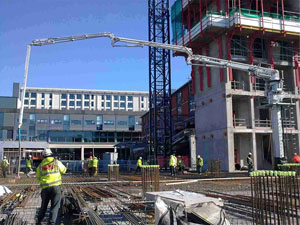
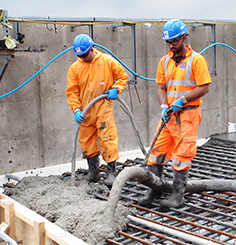 Placing the concretePumping the concrete is one aspect of the overall task. Another is controlling where the concrete is placed. Whilst this can be done by manually positioning the end hose, a remote-controlled articulated placing boom is often used to position the placing hose exactly where the concrete is needed. The robotic arm is designed to unfold is a small area and be able to reach every spot within the length of the boom. Even if there are difficult barriers and constraints in the area. The pipe runs the length of the boom and a placing hose on the end can be positioned to place the concrete precisely where it is needed, quickly and easily.
Placing the concretePumping the concrete is one aspect of the overall task. Another is controlling where the concrete is placed. Whilst this can be done by manually positioning the end hose, a remote-controlled articulated placing boom is often used to position the placing hose exactly where the concrete is needed. The robotic arm is designed to unfold is a small area and be able to reach every spot within the length of the boom. Even if there are difficult barriers and constraints in the area. The pipe runs the length of the boom and a placing hose on the end can be positioned to place the concrete precisely where it is needed, quickly and easily.

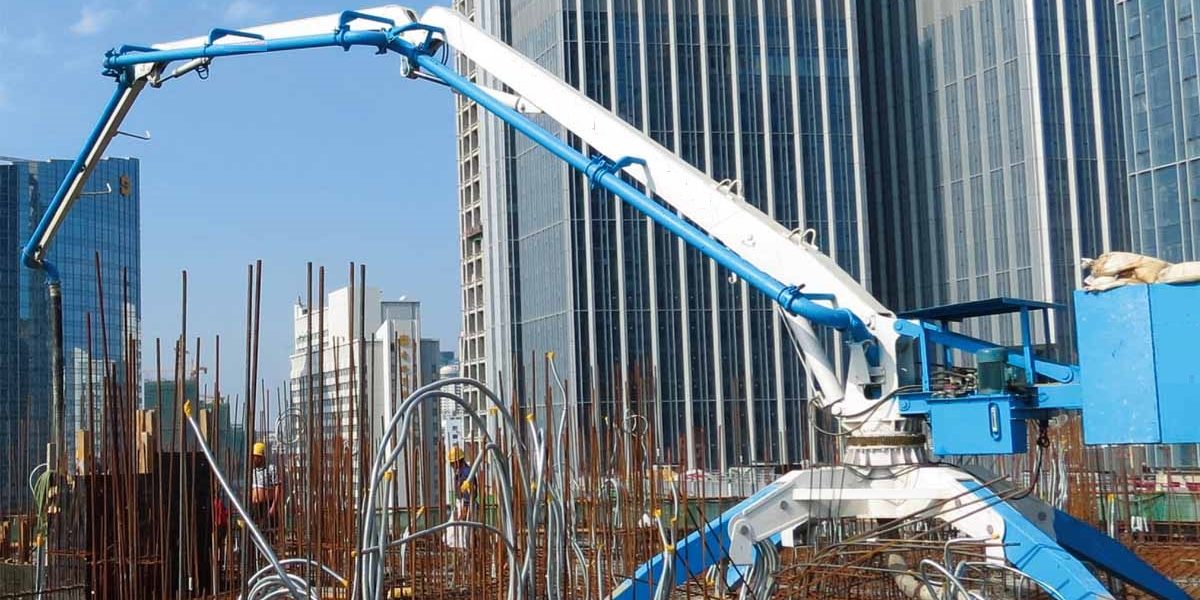
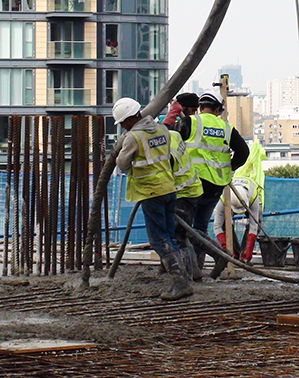
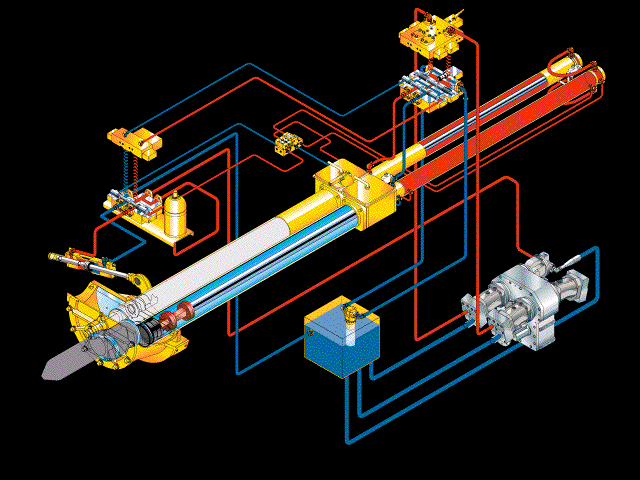 .
.